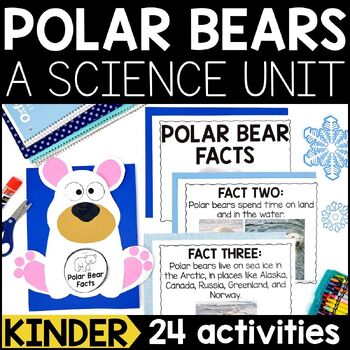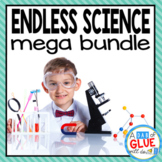Polar Bears Science Lessons, Crafts, and Activities for Kindergarten
- Zip
What educators are saying
Also included in
- Delve into the fascinating world of animals with our expanding Animal Study MEGA BUNDLE. Each weeklong unit features captivating PowerPoint lessons, engaging student activities, and paired worksheets. Perfect for year-round use, these resources offer endless learning adventures! Don't miss out—purchPrice $79.00Original Price $180.00Save $101.00
- This product is the perfect addition if you already own our Holiday Animal Studies Bundle and want more! If you don't have either bundle, you'll want to get our Animal Studies Complete Mega Bundle which includes all of the animal studies that we have and will continue to make.Engage your class in anPrice $42.00Original Price $121.00Save $79.00
- Engage your class in exciting hands-on learning experiences all year long with this Kindergarten Science Bundle. This kindergarten science curriculum resource contains 52 week-long science units and 12 months worth of seasonal/holiday science experiments. This bundle is packed with activities and inPrice $120.00Original Price $624.39Save $504.39
Description
Learning all about polar bears is so much fun! This exciting polar bear unit is a great resource to engage your learners during those cold weather months. This weeklong science unit is filled with exciting hands-on learning experiences and student activity pages. This unit was created with Kindergarten in mind, but can be adapted for use in Pre-K, First Grade, and Second Grade classrooms. Your class will thoroughly enjoy this winter science animal study!
Your students will learn all about polar bears, their life cycle, their characteristics, and countless polar bear facts to share with their friends and family.
With this unit you’ll have everything you need and more to teach your students all about polar bears. Click on “View Preview” to get a better idea of what you’ll get!
THIS POLAR BEAR UNIT IS INCLUDED IN OUR:
WHAT'S INCLUDED IN THIS UNIT:
- Unit Overview Lesson Plans
- At-Home Letter
- Teacher Guide Science Center & STEM Ideas
- Science Questions
- Book, Video, and Song Lists
- Polar Bear Facts Posters and PowerPoints
- Life Cycle of a Polar Bear Activities
- Parts of a Polar Bear Activities
- Emergent Readers
- Crafts, Activities, and Worksheets
- Fact and Research Craft
- Fact and Fiction Activity
- Question of the Week Headers
- Bingo Game
- Fingerplay
- Writing Center and Word Wall Materials
- Definition Posters
- Circle Maps
BONUS MATERIALS:
- Polar Bears vs. Brown Bears PowerPoint and Posters
- Polar Bears vs. Brown Bears Worksheets
- Hibernate Sort Posters
- Hibernate Worksheet
WAYS TO USE THIS UNIT
- Use the Polar Bear PowerPoint to open your daily mini-lesson. Gather your students for a quick, whole group lesson to kick off each day of learning. The slideshow includes 15 interesting facts about polar bears sure to excite your students. There is also a Polar Bears vs. Brown Bears PowerPoint that is great to use for comparing and contrasting.
- Students will love completing their research craft. Try incorporating the this or one of the STEM ideas within this unit in a science center. Your students will have so much fun collaborating with their friends while learning all about polar bears.
- This unit is filled with student activity pages. Use the many printables and emergent readers for independent work or partner practice. Not enough time during your science block? We get that! Create cross curricular connections when you incorporate these nonfiction learning materials in your reading and writing block.
- Provide closure to each day's learning by using the songs and videos that are linked in this product. You won’t ever have to go searching for fun ways to engage your students when you purchase this product!
WHAT TEACHERS ARE SAYING:
⭐⭐⭐⭐⭐ "The class had so much fun learning about polar bears. This resource gave me everything I needed to teach the content and was full of engaging information for the students to really dig deep. Thankful for the purchase so planning was stress free!"
⭐⭐⭐⭐⭐ "I love that this perfectly incorporates my science and language objectives in one unit! My students are obsessed with polar bears this year!"
⭐⭐⭐⭐⭐ "My students were highly engaged in learning about Polar Bears. The activities included were so much fun and they were able to recall facts long after we were done researching. Thank you for the engaging packet."
CHECK OUT THESE RELATED PRODUCTS:
LET’S CONNECT
➡️Subscribe to our weekly newsletter where you'll receive freebies and be the first to know about sales and new products.
If you have any questions or need help, please email us at hello@adabofgluewilldo.com.
Copyright © A Dab of Glue Will Do, LLC








